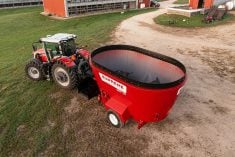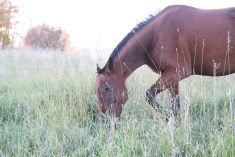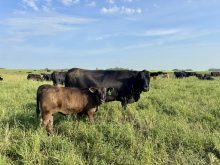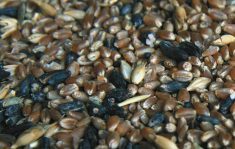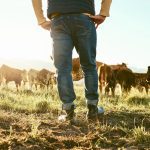As snow flies across the Prairies, calves are shipped and bulls are removed from the cow herd. Winter feeding is next on the list and good nutrition is vital to ensure the health and growth of calves and bred cows.
Stephanie Hansen, professor of animal science at Iowa State University, notes the importance of adequate vitamins and minerals.
“I really think minerals are the superhero of our cattle diets,” she said during the Manitoba Beef and Forage Conference.
Read Also

Linebreeding horses drives genetic bottlenecks
Too much linebreeding and prioritizing pedigree can narrow genetic diversity and lead to horse health problems in future generations.
“Minerals are involved in literally everything. You can get the energy and the protein right in your ration, and if you don’t have the zinc right or the vitamin A right, for example, that whole ration falls apart and your cattle don’t perform the weight that you expect.”
Why it matters: Calving is months away, but ensuring healthy mothers and babies starts now with a well-planned feed regimen.
Hansen shared two studies, one of her own on zinc and one by Hannah Speers from the University of Nebraska on vitamin A.
The zinc study showed that supplementing zinc before or after a long trucking journey will boost cattle’s feed efficiency gains. In the ‘before’ segment of the study, animals were fed three times the National Research Council’s recommended amount of zinc sulfate, up to 100 parts per million, for six weeks.
“One hundred parts per million … ended up giving us six kilos more body weight, per animal, by the end of the six weeks,” Hansen said.
The study revealed the same boost in efficiency during the post-trucking period when zinc was supplemented for the same times. This compensatory gain response addresses muscle fatigue, since zinc is important to energy metabolism, she said.
During transit, cattle standing in a trailer is not much of a problem on short hauls, but on long hauls of six, eight or more hours, cattle are tired when unloaded. Then they lie down and don’t eat much, resulting in minimal gains for the first while. Hansen said zinc could play the role of a “transit stress mitigator.”
It’s affordable at less than 50 cents per head during Hansen’s study, and has relatively low toxicity risks.
“We’ve got evidence from others of our studies that would actually suggest this zinc is being used to help the muscle have more energy. And that’s helping them want to go back to the feed bunk more quickly after trucking, because they’re not as tired. So they don’t lay around as much. They get back up and go to feed.”
Vitamin A
Vitamin A is considered essential for healthy cattle, helping in formation of healthy skin, bones, hoofs and vision. Cattle get much of their needed vitamin A from green grass during the warm months.
However, supplemental vitamin A may be needed later because a healthy calf starts in pregnancy, and according to Speers’ research, if a cow experiences low vitamin A during pregnancy, the calf is at greater risk of deficiency.
About 40 per cent of the vitamin A in colostrum comes from the cow’s liver stores and the other 60 per cent from the current diet. However, the ideal amount is a tricky question, Hansen said.
The NRC recommends 31,000 IU of vitamin A per day for a beef cow. For dairy cows, the recommendation doubles, and for small ruminants it triples. However, those recommended amounts may not be adequate.
In Speers’ study, researchers found that calves were deficient in vitamin A if using the NRC recommendation. To compare, they provided cows with three and five times the recommended amount.
The triple level, 93,000 IU per day, produced a “just barely adequate” amount of vitamin A for a calf. Five times the recommended level, of 155,000 IU per day, provided adequate vitamin A at a quicker rate and then exceeded adequacy.




